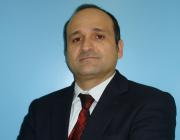Citation:
Korres DS, Lazaretos J, Papailiou J, Kyriakopoulos E, Chytas D, Efstathopoulos NE, Nikolaou VS. Morphometric analysis of the odontoid process: using computed tomography--in the Greek population. Eur J Orthop Surg Traumatol. 2016;26(2):119-25.
Abstract:
AIM: A morphometric analysis of the odontoid process of the A2 vertebra, in the Greek population, was conducted using CT scan. We aimed to determine the feasibility to use one or two screws when treating fractures of this anatomic element.
PATIENTS AND METHODS: One hundred and fifteen patients (57 men) of a mean age of 48 years (16-95 years) underwent a cervical spine CT scan examination. The anterior-posterior and transverse diameters of the odontoid process were measured from the base, at 1-mm interval upward on axial CT images. The length from the tip of the odontoid process to the anterior-inferior angle of the body of the axis was calculated. Data concerning the height and weight of the examined patients were collected.
RESULTS: The mean transverse and anterior-posterior distances were found to be 11.46 and 10.45 mm, respectively, for the upper end of the odontoid process. At the neck level of the odontoid process, the equivalent mean values were 11.12 and 8.73 mm, respectively, while at the base, these distances were found to be 13.84 and 12.3 mm, respectively. The mean distance from the tip of the odontoid to its base was 17.25 and 17.28 mm, respectively, while the mean distance from the tip of the dens to the anterior-inferior corner of the axis' body was 39.2 mm. Men showed greater values than women.
CONCLUSIONS: In this study, it was shown that in the Greek population there is enough room for one 4.5-mm or one 3.5-mm cannulated screw to be used. The application of two 3.5-mm screws is feasible in 58.6 % of the male and 26.3 % of the female population. This confirms that the knowledge of the true dimensions of the odontoid process is of paramount importance before the proper management of fractured dens using the anterior screw technique.
